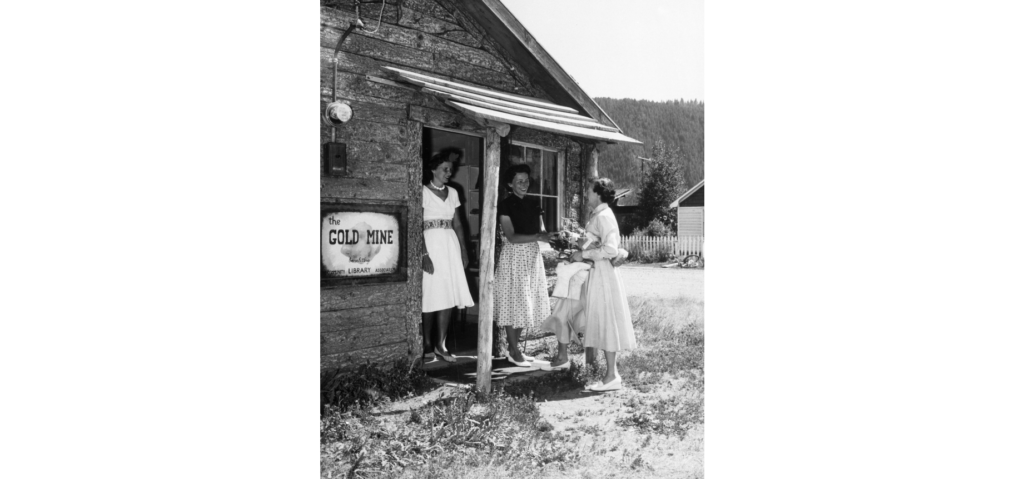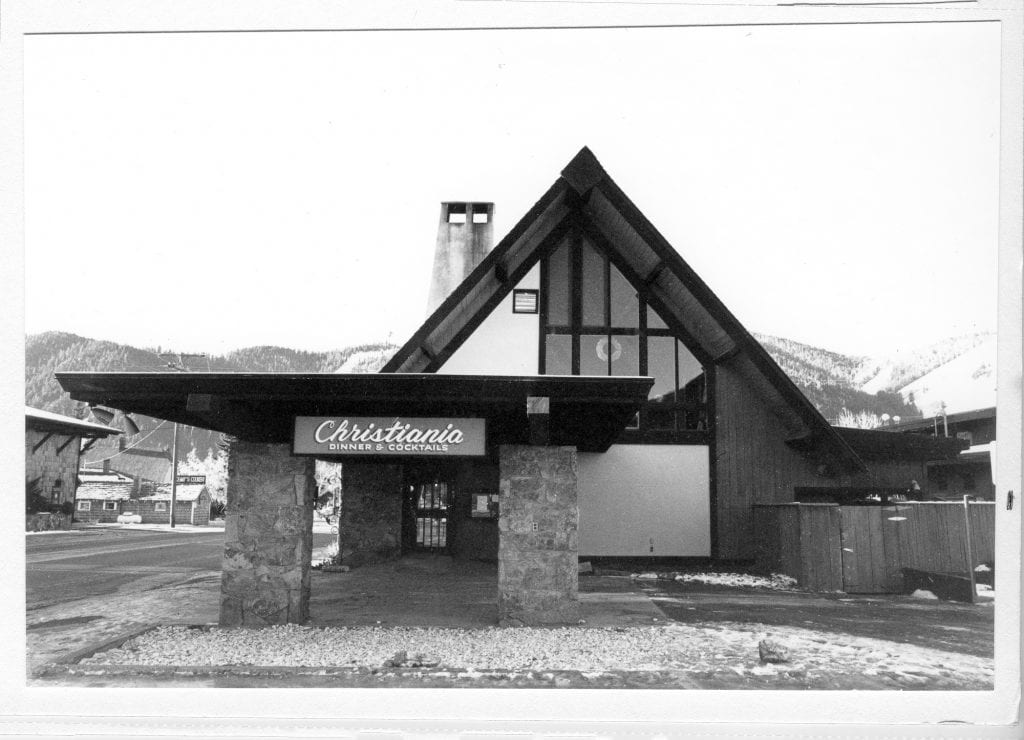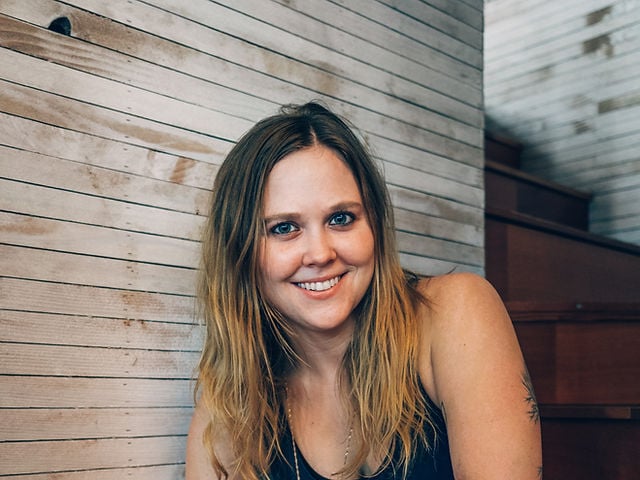The presence of author Ernest Hemingway can be felt all through the Sun Valley area. It was a favorite destination and the final resting place of Hemingway. During his time here, he was a regular at many of Ketchum’s dining and drinking institutions, penned novels and short stories in its hotels, and enjoyed visiting many places that are still in existence today, albeit as new businesses.
To emphasize just how much Hemingway was a part of so many places in this town, The Community Library is now offering a free Hemingway audio walking tour from TravelStorys titled “Hemingway in Idaho’s High Desert.” The tour is available on the App store and Googleplay and will guide the listener through 12 Hemingway-related stops; nine in Ketchum and three in Sun Valley. For those exploring the sites in person, the audio stories will trigger automatically as you approach each site. The tour is also available online for those unable to attend in person and is full of interesting history about this storied author.
The Community Library (now the Gold Mine)
Hemingway spent much of his time in the 1940s and 1950s within the blocks containing the Community Library, Michel’s Christiania, Atkinsons’ and other establishments.
Some of Hemingway’s favorite hiking and shooting companions, including Clara Spiegel, Anita Gray, and Nin Van Guilder McCrea, built the first library at this location in 1957. They were educated women who wanted to nurture culture and learning in their western outpost. They each chipped in a dollar and then opened a thrift store called the Gold Mine in an old mining shack to raise money.

By 1957, they had raised enough money to build The Community Library. After 20 years, The Gold Mine took its place, and a larger Library was built one block to the north, between Walnut and Spruce Streets. Ernest and Mary Hemingway both were issued membership cards for The Community Library in 1957.

The Christiania (now Michel’s Christiania)
Originally named The Christiania before owner Michel Rudigoz took it over, Hemingway frequented The Christy with his circle of friends including Winton Gray, the first mayor of Sun Valley, and his wife Anita.

Though their oldest son, Peter, was a child at the time, he recalls sitting at the bar with the adults and listening to them recount the day’s adventures. “You know, ten-year-old boys sitting at the bar at the Christiania, probably weren’t exactly legal, but nobody cared. It’s not like I was drinking beer…that’s where you went after hunting…still is, to some degree. You’d talk about the day, you talked about, you know, whatever you talked about in bars…I was probably mostly just listening, but the one thing about Mr. Hemingway is that he would include you. So I was not just listening. He would ask you your opinion, very often, and you would be comfortable enough to give it, and other things like that. And that was the case.” After many hunting excursions, the whole party would head over to the Christiania to enjoy a meal and talk about the wonderful day they’d just had.
It seems fitting that here, a place of so much liveliness and joy for Papa, was the venue for his last meal, the night before he passed away.
Sun Valley Shopping Center (now Bellissimo)
The block between Sun Valley Road and 4th Street, where now sit a salon, a Verizon store, and various boutiques, has always set a modern tone for Ketchum. In the 1950s, this was the site of the new Christiania Motor Lodge and Atkinsons’, a quaint and lively grocery store.

The owners of both were Chuck and Floss Atkinson, who became some of Hemingway’s most trusted Idaho friends in the late ‘50s; together, they hunted, picnicked, and enjoyed the outdoors. Atkinsons’ was a frequent stop for Ernest, and he wrote notes on postcards from their Motor Lodge.
As Ernest and Mary made plans to move from Cuba to Idaho in 1959, it was Chuck Atkinson who helped them find and purchase a house. Two years later, on July 1, 1961, when Hemingway arrived back in Ketchum after his second hospitalization at the Mayo Clinic, one of his first and only stops was at the Atkinsons’ store. The next day, Mary awoke to a loud noise and found her husband dead in the foyer from a self-inflicted gunshot wound. After a doctor was summoned, Mary called Chuck and Floss for help. They brought her to their apartment above the grocery store on this street, where they put her to bed and protected her from the onslaught of phone calls.
The Heiss House (now St. Thomas Episcopal Church)
What is now a church was once the Heiss house, a comfortable log cabin which Hemingway and his fourth wife, Mary, rented for $175 per month during the fall of 1958. It has since been relocated south of Ketchum. Ernest and Mary hadn’t been to Idaho for ten years, and none of the MacDonald cabins they had rented during the mid-1940s were available.

But the Heiss house was the ideal base for a golden autumn filled with hunting, writing, and meals at the Christiania restaurant, just a couple of blocks away. In this house, which Ernest dubbed “the House of Hemingstein,” he worked on his novel A Moveable Feast, working from 6 in the morning until noon, after which he could enjoy himself hunting.
Ketchum Post Office (now Rocky Mountain Hardware)
Now Rocky Mountain Hardware, the 1884 brick building is the same that housed the United States Post Office where Hemingway would both pick up and send his mail. He and his wife Mary shared Box 555. In the late ‘40s, ‘50s, and ‘60s, when they received mail in this box, a sender could just address letters with “Ketchum, Idaho” and no box number, and rest assured that they would get to the right party.


This building was constructed originally as a bank building in the middle of the Wood River Valley’s silver mining boom. It was the First National Bank of Ketchum long before it became the Post Office. Ernest, who was a prolific letter-writer, would walk here regularly after spending the mornings writing, often tallying his word count for the day. He learned the habit of word counting from his early days as a journalist for the Toronto Star.
Very often, letter-writing would accompany the creative work. Many of his letters were typewritten, but most were penned by hand. You can view some of his letters and telegrams for free at the Library’s Regional History Museum in Forest Service Park, open Wednesday through Saturday, 1-5 p.m.
The Sawtooth Club
The Sawtooth Club is an original Hemingway institution and still houses the very same business. On either side of the Sawtooth were the Alpine Club (now Whiskey Jacques) and the Tram Bar, all three of which Hemingway visited regularly in the late 1940s. In each locale, Papa Hemingway could enjoy gambling, which was illegal on Sun Valley Resort property, and have a drink with other locals.


At the Tram, which was owned by two men of Basque origins, he loved to speak Basque and play bullfight. Hunter S. Thompson, who visited Sun Valley in 1964, three years after Papa’s death, wrote an article in the National Observer about Hemingway’s time here. He describes Papa’s affinity for the side-by-side trifecta and the crowds it attracted: “He could live among rugged, non-political people and visit, when he chose to, with a few of his famous friends who still came up to Sun Valley. He could sit in the Tram or the Alpine or the Sawtooth Club and talk with men who felt the same way he did about life, even if they were not so articulate.”
The Casino
Across Main Street from the Sawtooth Club is one of Hemingway’s favorite watering hole that remains a favorite among locals today. This historic building was constructed in the 1920s from logs hauled down from Bald Mountain.

When it was first built, The Casino was called the Ketchum Kamp Hotel; a week of boarding and meals cost $12. Gambling was legal here during the ‘30s, and the building soon became the Ketchum Kamp Hotel and Casino.

The Casino has always stayed true to its roots: Not much has changed since the times when Hemingway used to come in for a drink. Hemingway befriended the Casino’s owner, William Russell “Slavey” Werry, who once invited him on a hunting trip and told him to meet the group at 5 a.m. You might think that given the unique opportunity to hunt with Ernest Hemingway, Slavey would forgive him a little tardiness. But the people of Ketchum have never been particularly awestruck by fame; when Hemingway hadn’t shown up by 5:05, the hunting party left him behind.
Pete Lane’s General Store (now Enoteca)
A building that has been standing on the 1880s and seen many iterations since then, it has remained much the same as when it was build with the “Eat more lamb” sign from one of the general stores that once thrived here still visible on the brick on the side of the building.

What is now Enoteca restaurant was Pete Lane’s General Store when Hemingway lived here in the late ‘50s. This was one of the two General Stores that Lane owned and operated from the ‘30s through the ‘50s; the other was in Sun Valley near the Challenger Inn. Both sold fashionable ski clothes, skis, and other sporting equipment, catering to recreationists. Ernest and Mary did a lot of hunting and fishing together in many parts of the world. They liked central Idaho for these activities as well, and shopped in the general stores for their various outdoor needs.
Hemingway’s Grave
Hemingway’s final resting spot is in the Ketchum Cemetery, a simple slab located near the footpath under a stand of spruce trees. Papa, as Hemingway was known, took his own life in his Ketchum home using a shotgun on July 2nd, 1961, just a few weeks shy of his 62nd birthday.
As dark as the end of his life was, the spiral of graves surrounding his and Mary’s that has grown over the past half-century is a testament to the bonds he built here. Names like Gene Van Guilder, George Saviers, Lloyd and Tillie Arnold, Anita and Winton Gray, and Chuck Atkinson are visible on stones that form a cluster around Ernest. These are the names of true friends who were unaffected by his celebrity status and treasured him for his character rather than his fame. The grave is often littered with pens, coins, and bottles of whiskey from fans paying respects.
Sun Valley Lodge
It was after dark on September 19th, 1939, when Ernest Hemingway drove up to Sun Valley Lodge in a dusty Buick convertible. He had driven from Wyoming and crossed the lava rock fields of southern Idaho as night fell, and he later said he would have turned around if he could have seen a place in the road to do so. Instead, he kept driving, and his late-September arrival began a 22-year love affair with central Idaho.

He arrived with Martha Gellhorn, who would become his third wife, and he was arguably at the height of his literary career. By 1939, he had achieved national acclaim with the novels The Sun Also Rises and A Farewell to Arms. He came to Idaho with his typewriter in tow and the manuscript for what would become For Whom the Bell Tolls well underway.
The Sun Valley Lodge was only two years old then, and it had not established an autumn season, but when Hemingway showed up, they quickly got him settled in Suite 206. Within days Ernest and Martha had nicknamed it Glamour House, and they regularly gathered with new friends there in the afternoon around what they nicknamed “Hemingstein’s Bar”.
Hemingway’s focus that fall was on his writing, but the afternoons and any days off were given to exploring the rugged Idaho terrain from the Salmon River to Silver Creek and the high desert and farms near Shoshone. The next September, in 1940, Hemingway mailed the corrected proofs of For Whom the Bell Tolls from Sun Valley, and it was here that he received the rave reviews that followed.
The Ram
This Sun Valley restaurant has been welcoming resort visitors since 1937; the legends surrounding this establishment are many including that “The Hokey Pokey” dance was created here.

The Ram was also one of Hemingway’s main haunts during his early visits to Sun Valley in the late ‘30s and early ‘40s. He and Martha frequently enjoyed quality food and drink at the Ram with friends. Their companions included Gene Van Guilder, a young and talented Sun Valley publicist, and Lloyd Arnold, who was a photographer for the Union Pacific Railroad. The Ram’s effect on Hemingway is immortalized by a mention in his short story, “The Shot,” in which he describes an antelope hunt in the Pahsimeroi Valley northeast of Sun Valley.
Challenger Inn (now Sun Valley Inn)
Now known as the Sun Valley Inn, the Challenger Inn was home to Hemingway in the fall of 1940 during his second visit to Sun Valley. He brought along Martha Gellhorn, who was soon to become his third wife, as well as his three sons, Jack, Patrick, and Gregory. He looked forward to going dove hunting with them and showing them the unique landscapes of the Idaho mountains.

At first, Ernest was holed up in Suite 206 of the Sun Valley Lodge, extremely focused on writing the final galley proofs of his book, For Whom the Bell Tolls. The boys stayed in the Challenger Inn, hunted and fished to their hearts’ content, and took advantage of the many amenities of the resort. Jack Hemingway describes that blissful fall: “We could charge by using our room number anywhere within the confines of Sun Valley proper. This new temptation was the ruin of my youngest brother, Gregory. He went completely berserk and charged unbelievable quantities of any and everything from the drugstore, restaurants, bowling alleys, stables, ice-skating rink, the photo shop, tackle shop, and the trap and skeet ranges…the number with Greg’s signature was nothing short of astronomical, and Papa was furious.”

The next fall, Glamour House at the Lodge was no longer part of the package deal Papa had been gifted by the resort, so he took a room in the Challenger with Martha and the boys. It was the ideal spot for the family to spend the autumn months.
The Ram, one of Ernest’s favorite dinnertime haunts, was a stone’s throw away.
Perpendicular to the Inn was the Sun Valley General Store he liked to shop in, which is now the Lupine and Camas Rooms.
Less than ten minutes’ drive east on Trail Creek Road was Trail Creek Cabin, a regular haunt for Ernest and his friends, with its stunning view of Bald Mountain. Built in 1937 as Sun Valley founder Averell Harriman’s hunting cabin, it became a place for them to hold what Mary Hemingway later described as “joint-jumping” parties, where they could eat warm meals and dance to live music.”
